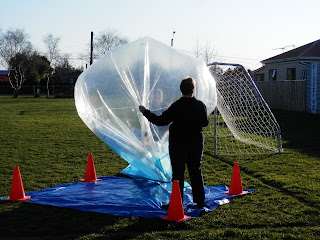Here is PACMAN in its native environment One of the key pieces of hardware we're deploying in this campaign is our PACMAN ( Particles, Activity and Context Measurement Autonomous Node ) ... not this pac-man . This little unit is capable of logging air quality parameters (dust concentrations, $CO_2$, $CO$), activity information (motion, distance to closest object) and context (time, temperature) every second. We expect to use this information to estimate what drives the indoor concentrations of dust in homes. All the participants that want to have instruments in their home will have one of these units installed but before we can do that we need to test if they are working as expected. So, we set them up in a bench facing a wall for a few days and as it is normal with experimental technology, not all of them worked perfectly but most of them did so we are go for PACMAN deployment. If you're curious as to what the data looks like ... here is a link to the test results of one of




